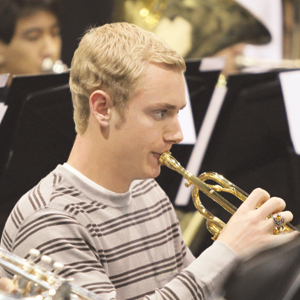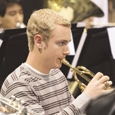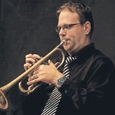 Advanced trumpet students need appropriate books and solo literature to continue progressing smoothly. Often, these students get lost practicing material they already sound good on, either because they do not have new music that is difficult enough or because they feel more comfortable on music that already sounds good.
Advanced trumpet students need appropriate books and solo literature to continue progressing smoothly. Often, these students get lost practicing material they already sound good on, either because they do not have new music that is difficult enough or because they feel more comfortable on music that already sounds good.
Many of the following etude books are core materials that should be in every player’s library or available for checkout from the band teacher. Taken as a whole, the etudes are sufficient for a committed student to be successful through their professional career.
Many teachers know the beginner books to help get young trumpeters rolling. However, the list below is for those students who show incredible promise and want the technical and musical skills needed to soar through those finger-biting college auditions. Having these book readily available for private teachers and students studying on their own will give them a great place to reach for success.
J.B. Arban, Complete Conservatory Method: Considered the most comprehensive pedagogical trumpet book in print, the Arban book covers all areas of trumpet technique as well as duets and cornet solos. With 380-pages of non-stop trumpet technique, the book is a must for every trumpet student. (Colin, 1981)
M.P. Bordogni, Melodious Etudes: These etudes are arrangements of 120 vocalises, set for voice and piano by Marco Bordogni. The printed piano score and a CD of the piano accompaniment are also available. By playing with piano on CD, the trumpeter has a chance to be a true soloist, adding a dimension to the usual practice fare. (Leduc, 1948)
V. Brandt Thirty-Four Studies: Vassily Brandt (1869-1923) was German born, but emigrated to Russia. He is best known for teaching at the Moscow Conservatory 1900-1912, and the Saratov Conservatory from 1912-1923. He was the trumpeter for the Bolshoi Theater Orchestra nearly two decades. This book designed to develop an orchestral approach to sound, articulation, intonation, and style. Each etude includes a short orchestral trumpet quotation, which is incorporated into original writing in the same style.
The etudes themselves are not difficult, but performing them correctly requires both chop endurance and a clear grasp of the musical style. This book is best studied with a trumpet teacher with established orchestral experience. The etudes are commonly used to practice transposition once the fundamental skills have been mastered.
N. Bousquet Thirty-Six Celebrated Studies for Cornet: Considered a prequel to the Charlier book, this book features etudes that are difficult in both key and technique. The style is that of early 20th century cornet music. (Carl Fischer)
R. Caffarelli, One Hundred Studi Melodici: This book includes specific instruction on every aspect of clef and intervallic transposition. The preface features charts and descriptions of both. The studies are melodic and lyrical, lending to a song-like approach to transposition. (Ricordi, 1957)
Theo. Charlier Thirty Six Etudes Transcendantes: Considered one of the greatest etude books written for trumpet, this book’s publication set a new standard for trumpet playing. The studies are very advanced and include both lyrical and technical playing. Newer editions contain the original French text, so any questions of interpretation can be answered using the original source. A piano accompaniment by Jean-Marie Cottet is available for ten of the etudes. (Leduc, 1946)
H.L. Clarke, Technical Studies: Many educators believe that the Clarke book is designed for finger dexterity. While it is true that finger dexterity is a byproduct of the book’s design, its actual intent is to build breathing and aperture flexibility and embouchure strength. When combined with finger dexterity, the result is a student with increased endurance, range, breath control, flexibility, and finger speed in all keys. (Carl Fischer, 1934)
C. Colin Complete Advanced Lip Flexibilities: This book aids in building a trumpeter’s range, which is increased rapidly within the first seven exercises. Colin also discusses topics such as proper warm-up, intelligent practicing, the role of the tongue in lip slurring, lip flexibility, and lip trilling and stretching. A major challenge even to good trumpet players, adequate rest is crucial when working from this book to avoid fatigue and bruising. (Colin, revised and edited: 1980)
G. Concone, Lyrical Studies for Trumpet: The Concone book is considered the prequel to the Bordogni book and offers a good introduction to lyrical playing. The melodies are simple and easy to hear, while still challenging to play beautifully and musically. The book progresses from easy to moderately difficult in both technique and musicality. It also makes a great transposition tool. (The Brass Press, 1972)
Gaston Dufresne, Develop Sight Reading: The Dufresne book is designed to establishes and refines the performer’s musical reflexes through sightreading. The 54 etudes are up to two pages each. Etudes should simply be read, not practiced; several weeks should elapse before the student sees the same etude again. The daily practice of sightreading less difficult melodies helps the player begin to develop instincts in melodic phrasing and harmonic movement. (Colin, 1972)
Everett Gates, Odd Meter Etudes: Filling a gap in the etude literature, this book introduces 7/8, 10/8, 5/4, 8/8, 9/8 , 5/8, and more. Each etude is annotated to give the player a better understanding of what the composer wants. The book produces clear improvement in students’ sightreading, as well as firm and immediate grasp of pulse and meter. (Sam Fox Publishing, 1962)
R. Getchell, Second Book of Practical Studies: The second of a two-book volume, Getchell explores the foundations of rhythm, as well as discussing how to formulate a warm-up routine. The book includes rapid dotted rhythms, triplets, syncopation, 3/8 and 6/8. The etudes should be practiced initially with minimal musicality, in order to emphasize exact rhythm and articulation. (Belwin, 1948)
E.F. Goldman Practical Studies for Trumpet: Each etude highlights one particular technical idea, primarily on articulation and rhythm. Studies include triple and double tonguing, running sixteenth notes, 38, 68, syncopation, grace notes, and rapid dotted rhythms. (Carl Fischer, 1921)
Hering, S. Etudes in All the Major and Minor Keys for Trumpet: A must-have for all trumpet students, this book outlines etudes in every major and minor key signature. The writing is similar in all keys, so that etudes in more difficult keys are considerably harder than those in easier keys. (Carl Fischer, 1975)
Irons, Earl. Twenty-Seven Groups of Exercises: Almost every trumpet player has worked through this book at some point in their career. Exercises are arranged in groups that lead students through an entire idea from beginning to end. Irons pays special attention to tongue position through the various ranges. Other topics include breath control, lip flexibility embouchure strength, and double and triple tonguing. (Southern Music Company, 1977)
Bai Lin, Lip Flexibilities: This book is distinctive in that exercises move at a slow pace in order to reach perfection at each stage, rather than increasing flexibility as quickly as possible. The book emphasizes relaxed throat and tongue throughout the exercises, as well as fluent and consistent air speed. (Bal-quhidder Music, 1996)
Robert Nagel, Trumpet Studies in Contemporary Music: A must for the advanced trumpeter, Nagel’s book “covers a wide variety of study material which reflects the most important styles and composition techniques used in the 20th century.” Topics include intervals, rapid staccato playing, dynamic contrasts, pentatonic mode, syncopation, impressionism, pointillism, and more. (Belwin Mills, 1975)
E. Paudert, Twenty-Four Modern Virtuoso Studies: Designed for the technically advanced symphonic player, the exercises feature flowing runs of sixteenth notes, triplets, and eighth notes with the typical rhythms and dynamic range of the symphonic style. This is excellent book to develop sound, style and articulation. (Carl Fischer, 1964)
E. Sachse, One Hundred Studies. International: The Sachse book was written mainly as a transposition study book for trumpet. However, it also features rhythm, unusual articulation patterns, intervals, varied time signatures, lyrical and technical skills. A single etude may have the student working on dynamics, turns, trills, lyrical playing, and both the low and higher range. The Sachse book is really a jack of all trades.
M. Schlossberg, Daily Drill and Technical Studies: Baron, 1941. A cornerstone in every trumpeter’s library, Schlossberg’s book is an essential introduction to breathing and articulation. Material includes long tones, intervals, octaves, lip flexibility, arpeggios, and scales. Twenty minutes daily of Schlossberg drills will give players a daily checkpoint for their fundamental technique, breathing, and chop response.
J.L. Small Twenty-Seven Melodious and Rhythmical Exercises: The Small book can serve as a prequel to the Wurm book. This book concentrates on phrasing, syncopation, lip flexibility and developing a strong embouchure through etude practice. The book is not sequenced in order of difficulty and includes etudes in virtually every major and minor key. (Carl Fischer, 1962).
J. Stamp, Warm-Ups & Studies: James Stamp developed these groups of exercises to remedy the weekly fatigue and injury his students were experiencing from heavy playing in the L.A. commercial, studio music scene. After much trial and error, Stamp developed a reliable, workable system to massage and repair damaged lips. A cornerstone in the etude literature, these studies are used daily by professionals around the world for warm-up and warm-down. (Editions BIM, 1978)
J. Thompson, The buzzing book (Complete Method): This method book is designed solely for buzzing a brass mouthpiece. The book takes the player through the ways of finding consistent mouthpiece placement as well as getting the player to create a greater and consistent airflow. Throughout the book there are wonderful illustrations and pictures depicting the embouchure. Two CDs accompany this book, either in C or Bb pitch for brass musicians to use to play along with the book. The buzzing exercises start simple and develop along with the player’s ability. (Editions BIM, 2001)
W. Wurm, Forty Studies: This is a collection of medium to difficult etudes for the advancing trumpeter. Many etudes for past Texas All-State auditions have come from this book. Each etude covers a specific topic, including intervals, articulation patterns, harmonic sequences, and specific rhythmic patterns. This book also makes a great transposition study. This book is a prequel to the Paudert studies book. (International, 1963)






